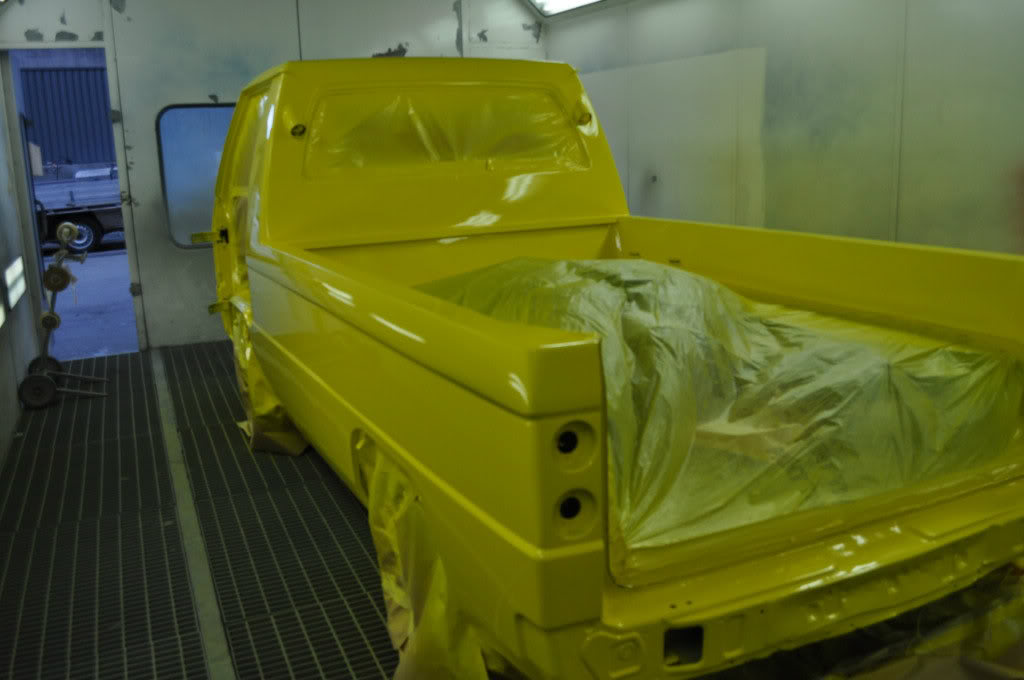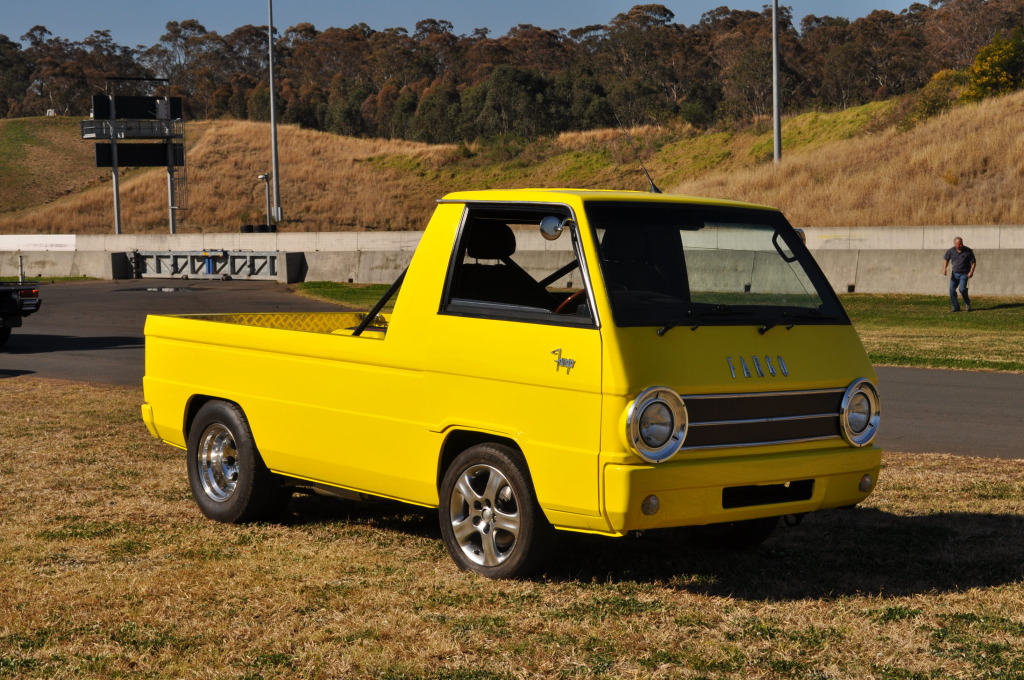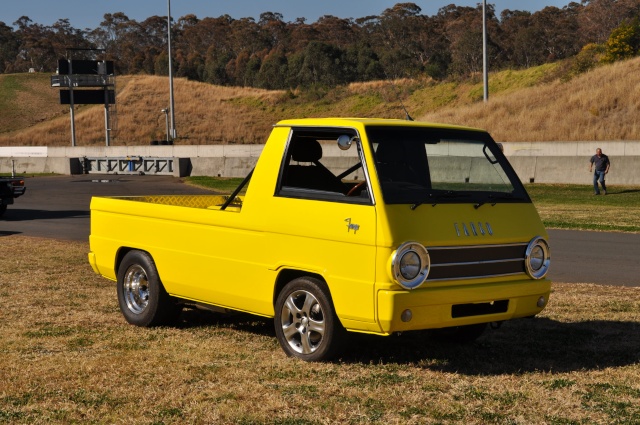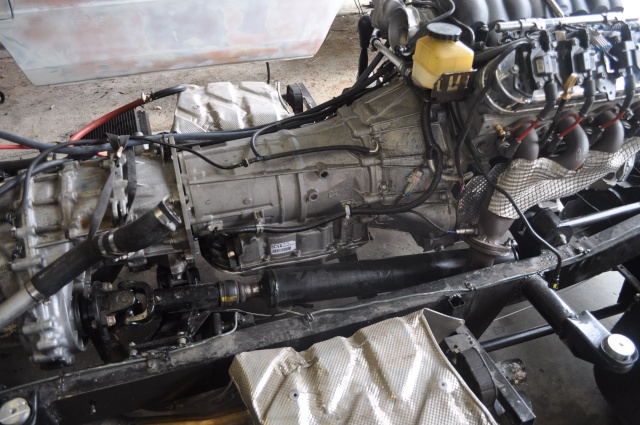We were never lucky enough to have the A100, or the G or E vans/pickups, sold in our country. As best I can ascertain there are 2 or 3 here and that’s it. I spent my whole career insuring specialist cars and never came across one or even heard of one in Australia.
Being a Baby Boomer I spent my pocket money as a teenager buying American Hot Rod Magazines in the late 60’s and lusted after an A100, just like the Little Red Wagon. Now I’m old and retired and can afford to import one the rules we have over here says I can’t have an engine in it larger than 5.7litres or around 318cu”. So why bother?
Given I can’t have what I wanted I looked around to see what I could have.

The above is a Mitsubishi L300 an ugly 8 seater van. Powered by a 1600cc 4 cylinder engine with 4 on the tree it was about as inspirational as driving a Honda. Mitsubishi and Chrysler had a close relationship in Australia, with the first 100 vans sold being called a Chrysler L300 before Mitsubishi took over the Australian arm of Chrysler.
These have a separate chassis that grants them more lenient modifying opportunities under our stupid modified vehicles laws.
I purchased a Holden Commodore with a 6.2litre Ls3 putting out 420hp with a 6 speed auto for $6,500 as an insurance wreck. After selling off what I didn’t want for $3,000 this gave me a very cheap engine and trans.
Following the wreck were two of the above vans (my neighbours weren’t too happy) and I went from there.
After attacking the vans with a 9” angle grinder and my MIG I came up with a pickup with reasonable proportions that I should be able to register as an “Individually Constructed Vehicle” which means it must pass current emissions and safety laws, quite similar to any advanced country’s rules.
This is the end result complete with my 19 year old son.

As you can see it has a certain early American pickup shape to it.
In the process I narrowed the rear of the chassis 200mm (8”) to fit the 10” wheels and 28x12x15 tyres. This necessitated a new diff housing which came from a Nissan Patrol and is as tough as a Ford 9” but comes with 11” disc brakes from the factory and are available here for a few hundred dollars. I narrowed the short side of the housing by 345mm (around 13”) and flipped the centre in the housing, as the drive is counter rotating. I used a front diff centre fitted with the LSD from a rear diff (straight bolt in) to give me a low pinion diff rotation the correct way for my drive. I couldn’t just flip the diff as I needed the long side on (our) driver’s side of the car.
The original van had leaf springs but I changed to a 4 bar and panhard from the Patrol is they work well and are next to free. Rear springs are a set of front springs from the spare van and they seem to work well.
Front suspension is a well-designed independent system with smallish disc brakes from the factory. I upgraded the brakes with hubs from another Mitsubishi an L200, which bolts straight on and has 6 lug wheel mounting to match the Patrol, plus Patrol rotors and callipers which when combined with the Patrol master cylinder gave me good brakes at nominal cost. I had to machine the front rotors and make new dogbones for the callipers but nothing too hard.

The engine sits in the rear tray (rather than under the front seats) with the harmonic balanced right above the axle centreline. In the above photo it is temporarily wired for its test drive around our driveway. My wife is still unhappy about the burn out marks.
With the engine sitting facing the wrong direction I needed to send the drive to the diff somehow. I used a Patrol transfer case and drive a standard length Patrol tailshaft from the front drive output of the transfer. This sends the drive down beside the engine to the offset diff. The diff centre is exactly under the air-conditioning compressor in the above photo.
I made a simple 10mm (3/8”) plate adaptor to bolt the trans to the transfer case and had a short spud shaft made to transfer the drive.
You may also notice the intake manifold has been spun 180 degrees as the engine looked a bit silly with the throttle body at the rear. This was much more involved than I originally thought and took quite a few days and lots of grinding and machining to get to work. I don’t recommend it.
The interior of the car has had a later dash fitted with a custom set of instruments. I’ll be using two original driver’s seats as they mount easily and are already approved in part of my compliance testing. My engineer has specified a roll cage as he is concerned about the strength of the upper seat belt mounts now the body has been chopped down. The rear braces for the bar will run through the rear cab wall and be sealed by some toilet fittings designed to couple the flush pipe from the cistern to the bowl. Nothing like creativity. Once I get the bar from the pipe bender I’ll install it and commence the approval process before I go much further with the chassis.
The load area will be finished with aluminium (aluminium!!) checkerplate.
At this stage we’ve test driven the vehicle on a private road and it’s pretty quick as it only weighs around 1250kg or 2750lb so it has around 300hp per tonne power weight ratio.
An overhead shot shows just how big the engine is. The load area is basically full of engine and transmission.

Weight distribution is looking like 40/60 front/rear so it won’t be any worse than a Porsche 911 in basic handling but a long way short in adhesion.
Those headlight rims that look a lot like A100 ones are in fact genuine A100 rims I imported.
As the car is no longer a Mitsubishi I get to call it what I want and I’m leaning toward FARGO. The reason behind this is my name is Rod Garnett and FARGO would be an acronym for F*%king Awesome Rod Garnett Original. Plus my late dad drove a FARGO when I was born. I know self-praise is no praise but it just appeals to me.
At this stage the only things I haven’t personally done are make the spud shaft for the transmission, re-configure the wiring and shorten and re-harden the axle shaft. All other fabrication has happened in my garage and been done by me personally. I dislike “farming” stuff out and of the 3 items above the wiring was done incorrectly and I couldn’t start the engine until I sorted it out. The bending and welding of the roll cage will be number 4 that I haven’t done.
Last edited by Zuffen on Mon Dec 19, 2011 9:40 pm; edited 1 time in total (Reason for editing : Dope can't spell!)






























